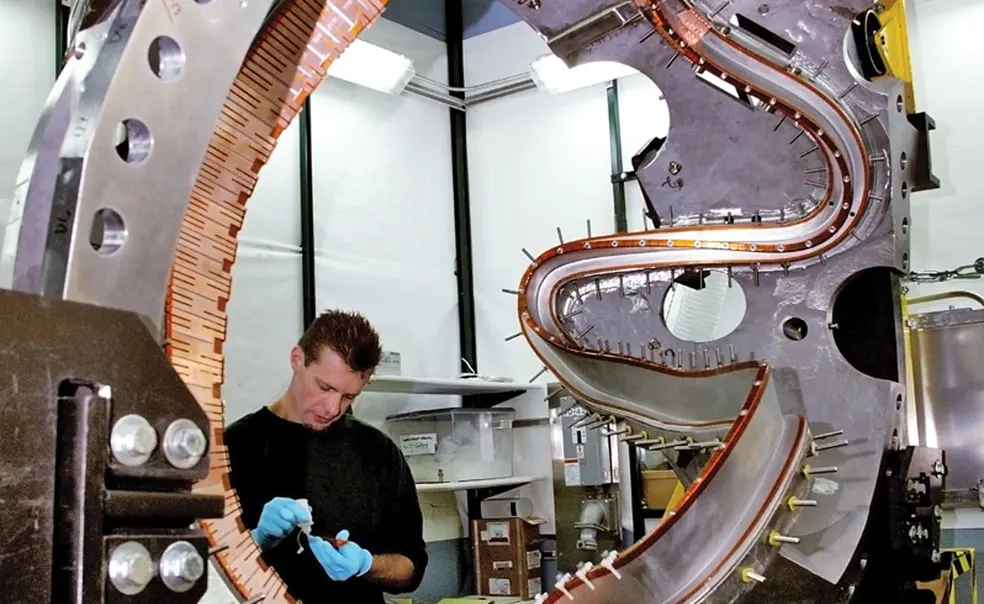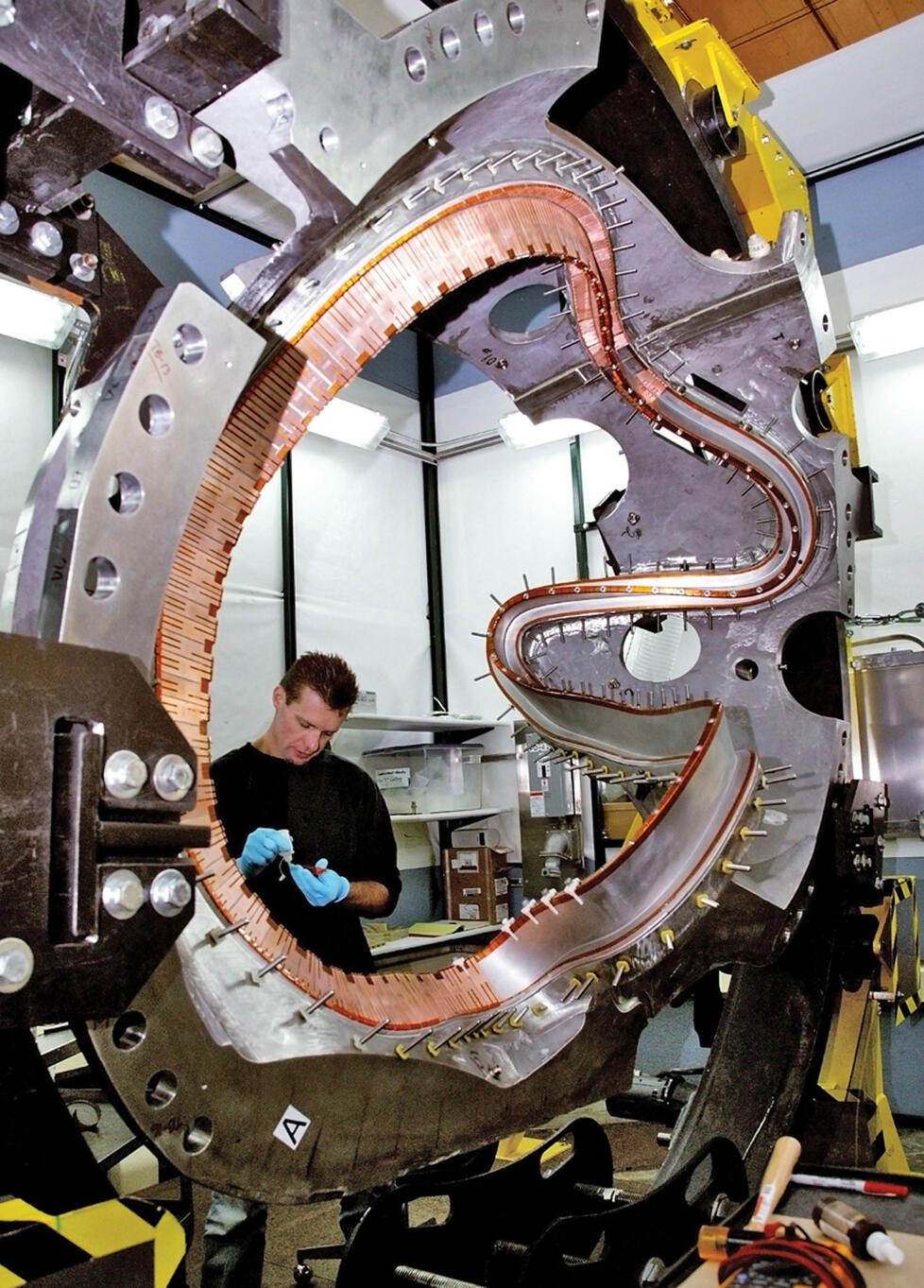Major fusion project gets the ax
The Department of Energy is shutting down a major fusion-energy project at the Princeton Plasma Physics Lab after spending nearly $100 million on its design and construction.
Continuing to assemble the National Compact Stellerator Experiment — described in an April review as substantially over budget, four years behind schedule, and facing continued uncertainties — would put “the future of research at PPPL in unnecessary peril,” said Raymond L. Orbach, under secretary for science at the U.S. Department of Energy.
Instead, Orbach said, the lab should focus on enhancing another fusion experiment that has been operating successfully since 1999 — the National Spherical Torus Experiment. The spherical torus is a device to study the physics principles of spherically shaped plasmas — hot ionized gases confined in a magnetic field in which nuclear fusion will occur.
“Proposed upgrades for the spherical torus experiment at PPPL can keep this facility at the forefront of fusion science research in the world well into the future,” Orbach said in a May 22 statement. He stressed the DOE’s “strong commitment to the future of PPPL.” The lab dates back to 1951, when Professor Lyman Spitzer *38 initiated the study of fusion at Princeton.
Lab officials had hoped that the stellerator would come on line as PPPL’s flagship experiment in time to replace the spherical torus, originally scheduled to shut down after 2010. But the stellerator, designed to test a possible configuration for a fusion-power reactor, fell victim to a tight federal research budget and to the complexities of its irregular shape — its 18 coils are described as among the most complicated electromagnets ever designed.
The stellerator project accounts for $14 million of the lab’s $75 million annual budget; about 40 scientists, engineers, and technicians are directly involved with it. Princeton officials are hoping that for the next fiscal year, at least some of that money will be reallocated to the spherical torus — both in allowing the experiment to be run for more weeks during the year, and to begin the proposed upgrades.
A.J. Stewart Smith, dean for research, said enhancements to the spherical torus could take three years to design and build at a cost “in the tens of millions of dollars.” But work to double the device’s current and magnetic field would increase its productivity four-fold, he said.












1 Response
Daniel Jassby *70
9 Years AgoTokamak vs. stellerator
The recent cancellation of the National Compact Stellerator Experiment (Notebook, July 16) reminds us that exactly 40 years ago the amazing Russian T-3 tokamak results burst upon the world and blindsided the U.S. stellerator program. The ensuing shutdown of stellerator work at the Princeton Plasma Physics Laboratory, and the rapid adoption of tokamaks at PPPL and other U.S. laboratories, was arguably the most important episode ever in the U.S. magnetic fusion program.
Successively more powerful tokamaks with ever more impressive performance came on line. (The spherical torus discussed in Notebook is a tokamak variant.) Nevertheless, new stellerator projects eventually were funded by the U.S. Department of Energy (DOE) at various fusion labs, with at best lackluster results and usually far worse. Stellerators are more complex magnetic confinement devices than tokamaks, and therefore have always appealed to theoreticians possessing complicated minds and access to supercomputers, but Nature is indifferent to both.
Having learned nothing from decades of tokamak progress and continued stellerator debacles, in the mid-1990s the directorate at PPPL and its counterpart at the DOE reversed the 1968–69 revolution: They decided to shut down the flagship U.S. tokamak (the TFTR) and replace it with a stellerator of unimaginable complexity, the recently aborted NCSX. These foolish decisions have served only to expedite the ongoing demise of the U.S. magnetic fusion program.
(Editor’s note: Jassby was former principal research physicist at PPPL, retiring in 1998.)